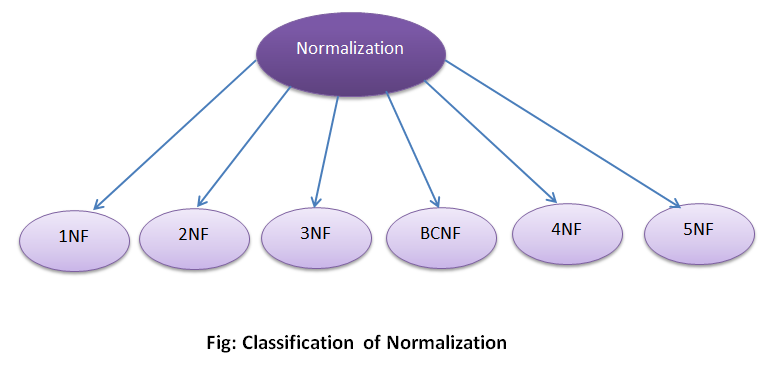
What is Normalization in DBMS?
What is Normalization in DBMS? | Types of Normalization in DBMS. As you are aware, DBMS are normalized. A database management system (DBMS) utilizes normalization to organize data efficiently in order to reduce unnecessary redundancy and enhance data integrity. Here you will a detailed guide on Normalization and it’s 4 types.
Table of Contents
Introduction:
Data normalization is an important process that helps improve data storage, organization, and management. It is the process of optimizing and organizing data in a database in a manner that reduces redundancy and ensures that data integrity is preserved. Additionally, normalization prevents data anomalies, such as insertion, deletion, and update anomalies, as well as improving data consistency.
What is Normalization in DBMS?
A relational database normalization procedure consists of organizing data in a relational database in order to reduce data redundancy and improve data integrity. During normalization, a database is divided into two or more tables and relationships are established between each table. This minimizes duplicate data and ensures that the data is consistent and accurate.
Types of Normalization of DBMS
There are several types of normalization of DBMS:
For the purpose of normalizing a database, various normal forms can be used, the most commonly used being the first normal form (1NF), the second normal form (2NF), and the third normal form (3NF). The Boyce-Codd Normal Form (BCNF) has a set of rules which must be followed in order to achieve a certain level of normalization.
First Normal Form (1NF)
A first normal form (1NF) is the most basic level of normalization. It requires that each table have a primary key, as well as atomic information, which cannot be divided further. 1NF stores all data in a single table, without making repetitive groups of information.
Second Normal Form (2NF)
A second normal form (2NF) improves upon the first normal form by eliminating data redundancy. It consists of dividing data into multiple tables, each of which contains unique data. The elimination of redundancies in data is ensured through this process, as well as the consistency of data across all tables.
Third Normal Form (3NF)
The third normal form (3NF) builds on the second normal form by removing data .A 3NF model divides data into multiple tables with each table containing data that is directly dependent on its primary key. By doing this, it is ensured that all data is consistent across all tables, eliminating the possibility of any potential data inconsistencies.
Boyce-Codd Normal Form (BCNF)
This normal form is used in database theory to verify whether a relationship has achieved a higher level of normalization using the Boyce-Codd Normal Form (BCNF). Specifically, a relation qualifies as BCNF when all non-trivial functional dependencies in that relationship are dependent on a superkey.
The functionality of any attribute outside of the primary key is functionally dependent upon the entire primary key, not just a subset of it, in a relation. BCNF is regarded as a stronger form of normalization than the Third Normal Form (3NF) since it is less likely to contain anomalies and can help prevent data inconsistency.
Why is normalization important in DBMS?
An important aspect of database normalization is ensuring that the data is consistent and accurate. The technique also improves the performance and scalability of the database by minimizing the amount of data that needs to be updated or retrieved and reducing duplication.
How do I normalize a database?
A database can be normalized by analyzing data, identifying functional dependencies, and specifying primary keys. Because of this, normal forms can be used as a guide for organizing the data into smaller, more manageable tables and establishing relationships among them. The normalized database should be tested for data integrity issues, performance improvements, and scalability before implementation.
FAQs
Can normalization be applied to NoSQL databases?
Relational databases, and NoSQL databases. Normalization can also be applied to NoSQL databases. Nevertheless, normalization principles, such as the identification and elimination of redundancy, as well as the establishment of relationships between data, can still be applied.
What are the rules for normalizing a database?
A normalized database should eliminate redundant data, ensure that data dependencies make sense, create distinct tables to separate the data and ensure that the data is stored efficiently.
Can a database be over-normalized?
When a database is over-normalized, it occurs when it is normalized beyond what is necessary to maintain data integrity and consistency. As a result, it is important to strike a balance between normalization and practicality when designing a database.
Conclusion:
A normalization process is an essential component of DBMS that minimizes data redundancy and improves data integrity by organizing data in a manner that minimizes data redundancy. Following the principles of normalization can result in the creation of a more efficient and reliable database. A fundamental aspect of database design and management is understanding the concept of normalization, as well as various forms of normalization.







